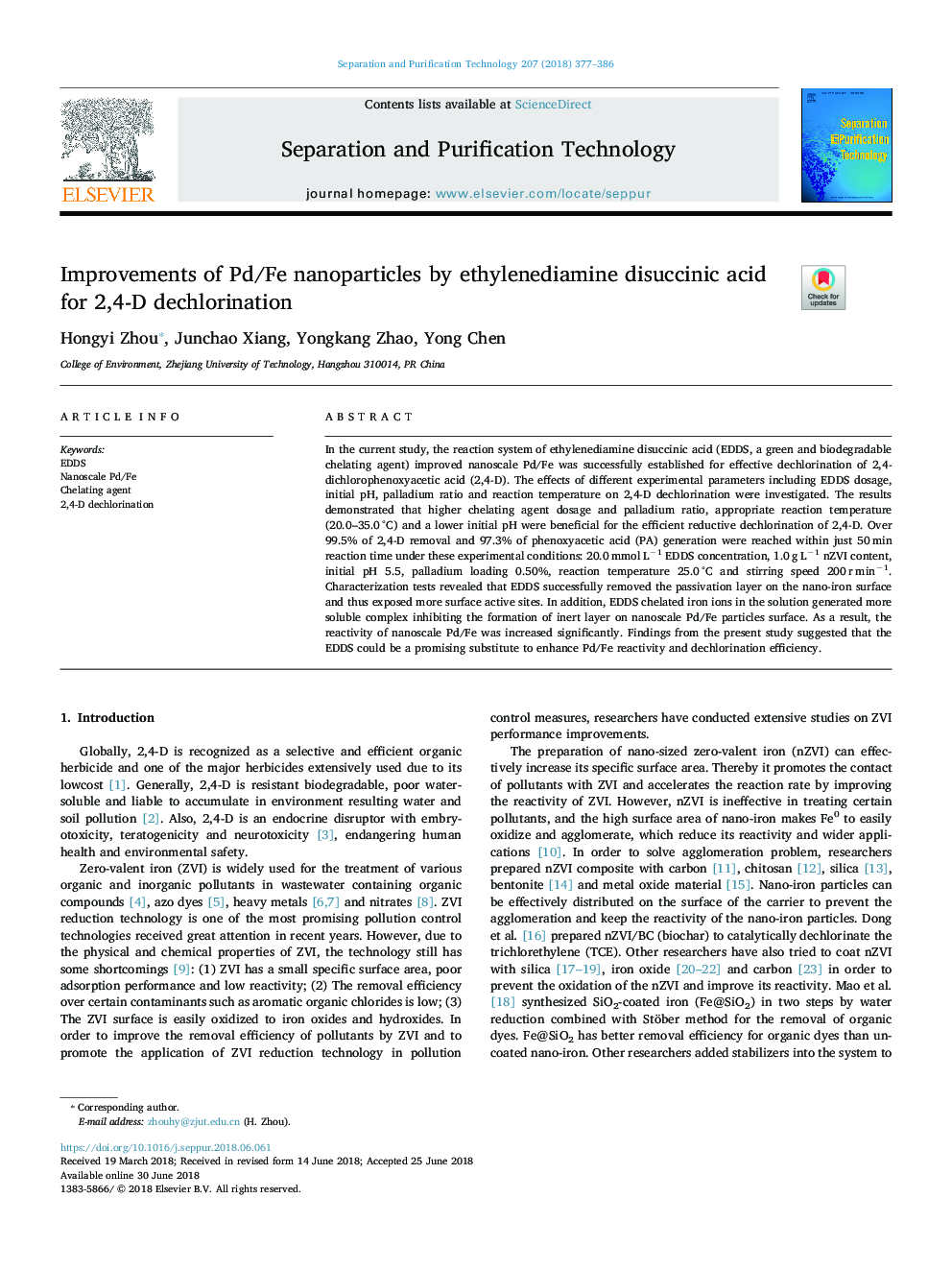| Article ID | Journal | Published Year | Pages | File Type |
|---|---|---|---|---|
| 7043550 | Separation and Purification Technology | 2018 | 10 Pages |
Abstract
In the current study, the reaction system of ethylenediamine disuccinic acid (EDDS, a green and biodegradable chelating agent) improved nanoscale Pd/Fe was successfully established for effective dechlorination of 2,4-dichlorophenoxyacetic acid (2,4-D). The effects of different experimental parameters including EDDS dosage, initial pH, palladium ratio and reaction temperature on 2,4-D dechlorination were investigated. The results demonstrated that higher chelating agent dosage and palladium ratio, appropriate reaction temperature (20.0-35.0â¯Â°C) and a lower initial pH were beneficial for the efficient reductive dechlorination of 2,4-D. Over 99.5% of 2,4-D removal and 97.3% of phenoxyacetic acid (PA) generation were reached within just 50â¯min reaction time under these experimental conditions: 20.0â¯mmolâ¯Lâ1 EDDS concentration, 1.0â¯gâ¯Lâ1 nZVI content, initial pH 5.5, palladium loading 0.50%, reaction temperature 25.0â¯Â°C and stirring speed 200â¯râ¯minâ1. Characterization tests revealed that EDDS successfully removed the passivation layer on the nano-iron surface and thus exposed more surface active sites. In addition, EDDS chelated iron ions in the solution generated more soluble complex inhibiting the formation of inert layer on nanoscale Pd/Fe particles surface. As a result, the reactivity of nanoscale Pd/Fe was increased significantly. Findings from the present study suggested that the EDDS could be a promising substitute to enhance Pd/Fe reactivity and dechlorination efficiency.
Keywords
Related Topics
Physical Sciences and Engineering
Chemical Engineering
Filtration and Separation
Authors
Hongyi Zhou, Junchao Xiang, Yongkang Zhao, Yong Chen,
